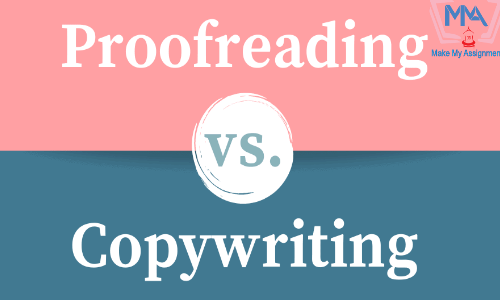
How Proofreading is different from Copywriting?
All the assignments and academic writing projects have one thing in common, and that is proofreading. On the other hand, copywriting is quite evident in research papers because it involves a lot of critical aspects, which makes it stand out among other literature. We all come across many academic projects and research papers at least once in our lives, especially if you are a student, then you might be told to submit one for assessment. This is quite a daunting task for students that involves more complexity and systematic working of a series that majorly include the writing of, abstract, acknowledgement, table of contents, the introduction, research problem, review of literature, hypothesis and its testing, sampling, methodology, footnotes and citations.
Research papers comprise more of a professional tone because of its work intensity and the time spent on them to bring out the best in terms of quality. Change is something that we all have to undergo; the same pattern follows for the research paper writing process as well, where we need to undergo proofreading. Research paper and proofreading go hand in hand – its like two sides of a coin but both of them are represented as a whole. Therefore, we can say that copywriting, and proofreading are both academic editing tools that help you to polish your content, and it is vital to learn the difference between the two, especially if you are willing to adopt this as your writing profession.
Though it is not difficult to understand and learn the difference between the two, it helps a person become a proficient writer and gives him an opportunity to excel in writing. In addition to this, defining proofreading is what the experts and academic writers perform to check and re-check the series of content after it is published and gets turned into a final copy only after it is approved in terms of proofreading. Proofreading adds the final value to your paper and is thus important to ensure that nothing goes wrong in the writing and structure of the paper. On the other hand, copywriting can be defined as a preparation that is used for spotting repetition, botches and inconsistencies. However, if we go back in time, we could witness that copywriting was merely used for putting marks and making corrections in a paper.
The main purpose of this blog is to highlight the difference between copywriting and proofreading so that students are aware of the concept and are able to design their research papers in a more careful manner.
Over the past few years, everything has changed and developed, and even the writing aspect is now done in a word-processing program. Editing, on the other hand, is replaced with PDF corrections instead of employing the use of pencil and eraser. All things considered, the copywriter’s part includes cleaning a bit of substance with the goal that it can be shared as a well-written work. It’s the duty of the copywriter to guarantee the language structure of the composition that looks smooth and astonishing. Apart from this, they must also rearrange or suggest changes in terms of specific viewpoints. Coming towards the work of a copyeditor, his/her part includes checking the copy of the content and looking out for mistakes in the same. The objective here is not to re-examine the content again; instead, it is to redress the mix-ups so that no mistakes are left in the content. Alterations need to be presented in such a manner that the new copy resembles the original copy’s more effective and well-composed version. Even the online academic writing services help you figure this out effectively.
Now that you’re aware of the difference between proofreading and copywriting, you can easily compile your own assignments and research papers with perfections, noting the difference as mentioned above. Apart from this, if you ever need help regarding your academic assignments or papers, feel free to contact our online assignment writing services for professional help and guidance.






